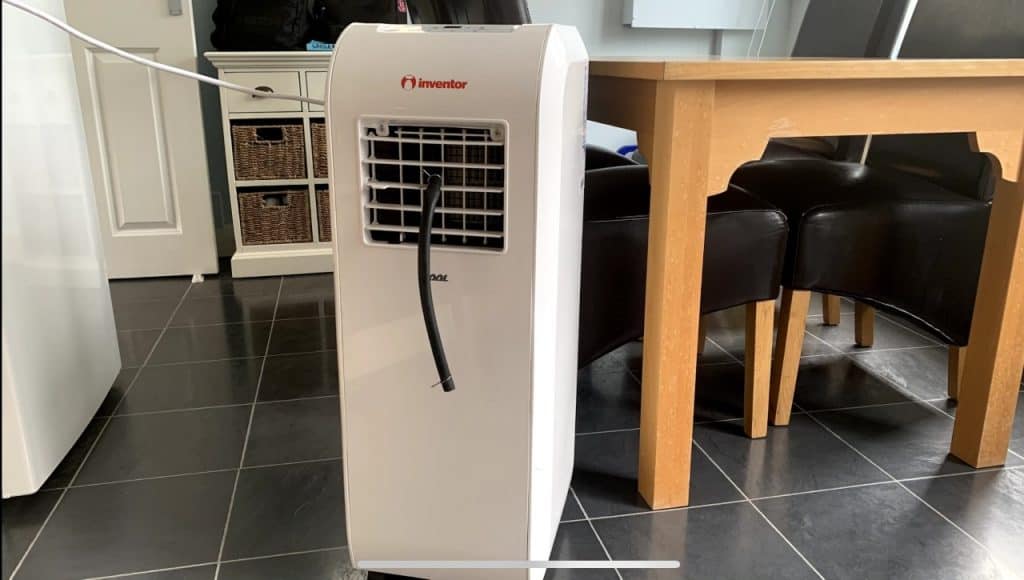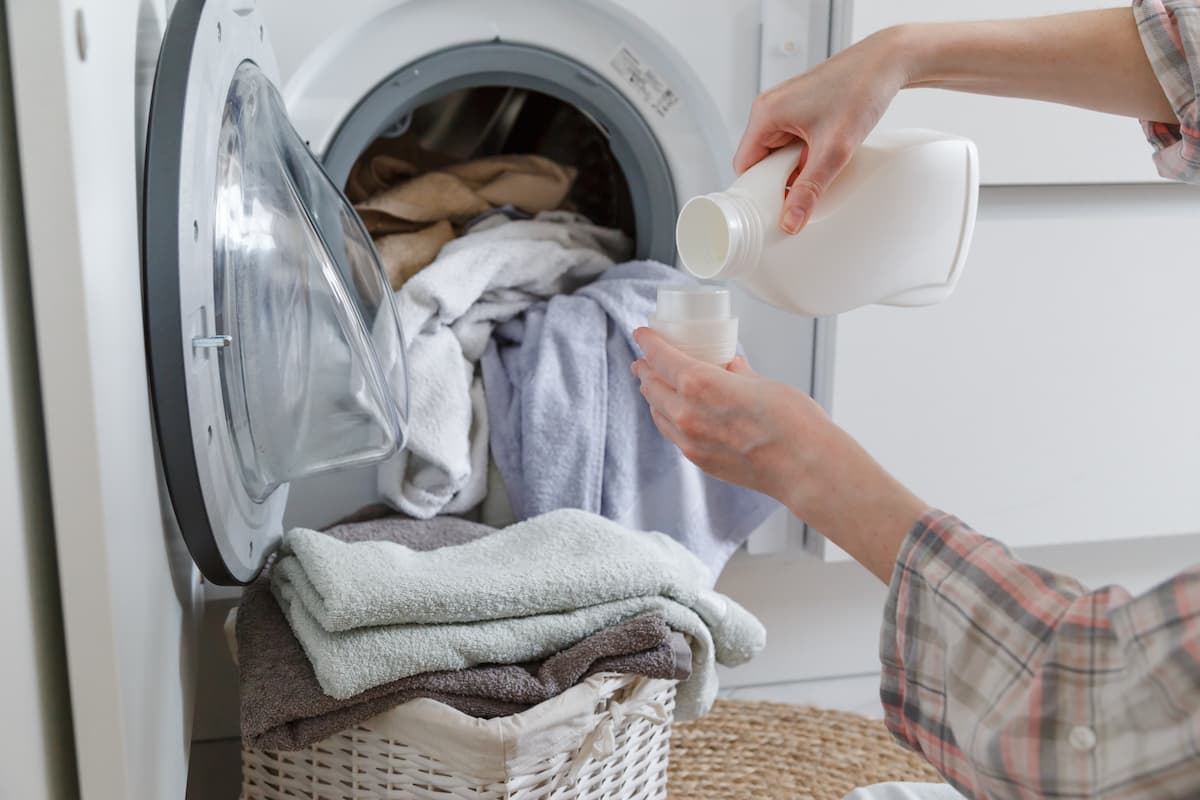Portable air conditioners are effective and practical tools for cooling down a space. If your office or home often gets too warm during the summer months, these devices can offer the perfect solution.
Can you lay a portable air conditioner on its side?
As a general rule, portable Air Conditioners should not be used on their side. The main danger is that doing so could lead to the compressor inside the unit failing due to oil deprivation.
However, this differs somewhat depending on the specific type of portable AC you use,
There are many different varieties of portable AC units available, so to answer this question definitively we must explore the specifics in greater detail.
If you’re considering using your air conditioner on its side, but are concerned that this could damage it, you’ll find all of the necessary information you need in this guide.

Can You Lay a Portable Air Conditioner On Its Side (When in Use)?
When using a portable air conditioner in small spaces, or rooms that have a lot of other items in, it may be tempting to lay the unit on its side. Logically, this may seem like a good solution to having limited space available.
It is strongly advised that portable air conditioners should only be used upright when in use.
Laying the AC on its side, or at another angle, could lead to permanent damage or a very expensive repair. This is largely because the air conditioner would struggle to hold the condensation and moisture from the air inside it, causing a leakage.
Secondly, the unit may be depleted of oil, which could cause serious damage.
Portable air conditioners are made up of many integral inner components, and laying them on their side is likely to put them under strain, making them work harder to carry the function of conditioning hot air out of space.
- One of the most vital components in a portable air conditioner is the compressor.
This mechanism is constantly moving when the air conditioner is in use. It vibrates at a rapid rate and is the most likely component to break if you lay the unit on its side or at another angle.
If the compressor breaks or malfunctions, this will cause the entire portable air conditioner to be rendered useless.
It’s consequently very important not to put any unnecessary strain on this component, which laying it on a side is very likely to do.
The compressor is necessary for the air conditioner to retain condensate from the air in a room. It also drives the hot air that has been collected through a ventilation hose, which is then sent outside of the building.
It also helps the air conditioner to suck moisture out of the air, which is then collected within the unit. Laying the portable AC on its side will result in gravity moving the water out of the unit, causing leakage.
Portable air conditioners have a specific condensation container that is designed to collect the moisture so that it can be emptied.
If it is laid horizontally, rather than being collected in the container, the condensation will run out onto the floor, which could be potentially hazardous if someone walks by it.
Take a look at this YouTube video that shows the internal workings of a portable air compresser.
How Long Should a Portable Air Conditioner Sit Before Turning On?
If a portable air conditioner has been transported or kept in storage, it’s a good idea to wait sometime before turning it on. Several reasons turning the device on straight away could be problematic.
One of the most important components in a portable air conditioner is oil. Without oil, the AC unit would be unable to function properly, as it lubricates other essential mechanisms like the compressor.
Oil also plays a pivotal role in the removal of heat within the portable air conditioner.
When the unit is moved around or placed in any other position apart from upright, the oil is no longer evenly distributed and instead may all move to one side or part of the device.
If you were to turn on the portable air conditioner without the oil being spread around all of the components and parts that require it to function properly, this could cause permanent damage.
Much like engine oil in a car which lubricates many of the integral components, the oil in a portable AC performs a similar function.
- It is therefore advised to leave the portable AC sat upright for 24 hours before turning it on.
While this may seem like overkill, oil takes time to move to its correct positions within the air conditioner, and therefore it’s best to err on the side of caution rather than switching it on too soon and risking damaging it.
The exact time that the portable air conditioner should sit upright before turning on depends on the design, and more specifically the type of compressor it has. The three main compressors used in portable air conditioners are:
- Rotary compressors
- Reciprocating compressors
- Scroll compressors
The latter type of compressor relies heavily on oil to function. When the air conditioner is turned on, an oil system is formed by the various bearings and the shaft, and this provides adequate lubrication for the cooling process to proceed.
Rotary compressors also need oil to be evenly distributed around the inner components, especially the rotor and the cylinder. These parts come into contact with one another and therefore require oil for lubrication.
If your portable air conditioner has been transported in an upright position but has been moved around a lot, it probably doesn’t need to sit for as long as 24 hours before you can use it again.
This is because the oil inside the unit is unlikely to have collected in one place, but may have been dispersed slightly due to movement when in transit.
12 hours is likely to be enough time sat upright for the oil to spread evenly between the components that require it to function properly.
If you’re tempted to switch on the portable air conditioner too soon without leaving it sat for a while, this could be disastrous.
Certain components may not have enough oil to be lubricated adequately, which could cause them to break when they collide. The compressor is most at risk, and they’re not cheap to replace.
Can You Store a Portable Air Conditioner On Its Side?
We’ve established that using a portable air conditioner on its side is not a good idea, but what about when it is in storage?
Portable air conditioners are likely to be used heavily in the summer months when temperatures soar and you need to keep your house cool.
However, when winter comes around, it may be time to find a space to store the device until it is required again the following year.
Due to the bulky size of many portable air conditioners, storing them on their side may be a more practical way to save space.
While it is preferable to store the device upright as it is intended to be used, keeping it laid down on its side is ok providing you take some precautions.
- The main thing to remember is that if your AC has been stored on its side for a long time, you’ll need to sit it upright for even longer before you switch it on again.
When the device is not being used, storing it on its side will not cause any damage to the inner components. It’s only when you switch it on that the damage could occur.
Therefore, it’s incredibly important to remember not to switch it on right away when the time comes to cool down your room again.
Several other measures should be taken if you are storing your portable AC on its side, to ensure that it doesn’t get damaged.
Firstly, you should make sure that the power cord is not resting under the weight of the device, as this will cause wear and tear. If possible, detach the power cable altogether and store it somewhere safe.
Also, you can remove the ventilation hose to prevent it from being twisted or put under tension. These hoses are often attached by a screw mechanism and are easy to take off.
Finally, it’s essential to drain the water from the condensation collection container, especially if you’re storing the AC on its side. The filters should also be extracted and cleaned.
Related Questions
Do all portable air conditioners need to be vented?
While most portable air conditioners do need to be vented, some varieties don’t. These are commonly known as “evaporative cooling systems”. However, they are not as effective at cooling a room as a vented portable air conditioner.
Do portable air conditioners use a lot of electricity?
The amount of electricity that portable air conditioners use varies depending on their size and design. On average, a medium-sized portable AC uses somewhere in the region of 2700-3000 watts each hour, with larger units using upwards of 4000 watts.
Do portable air conditioners use refrigerants?
Like kitchen refrigerators, portable air conditioners do use refrigerant in the form of a liquid or gas. This allows the device to remove humidity from the air, thus cooling the temperature of a room.





